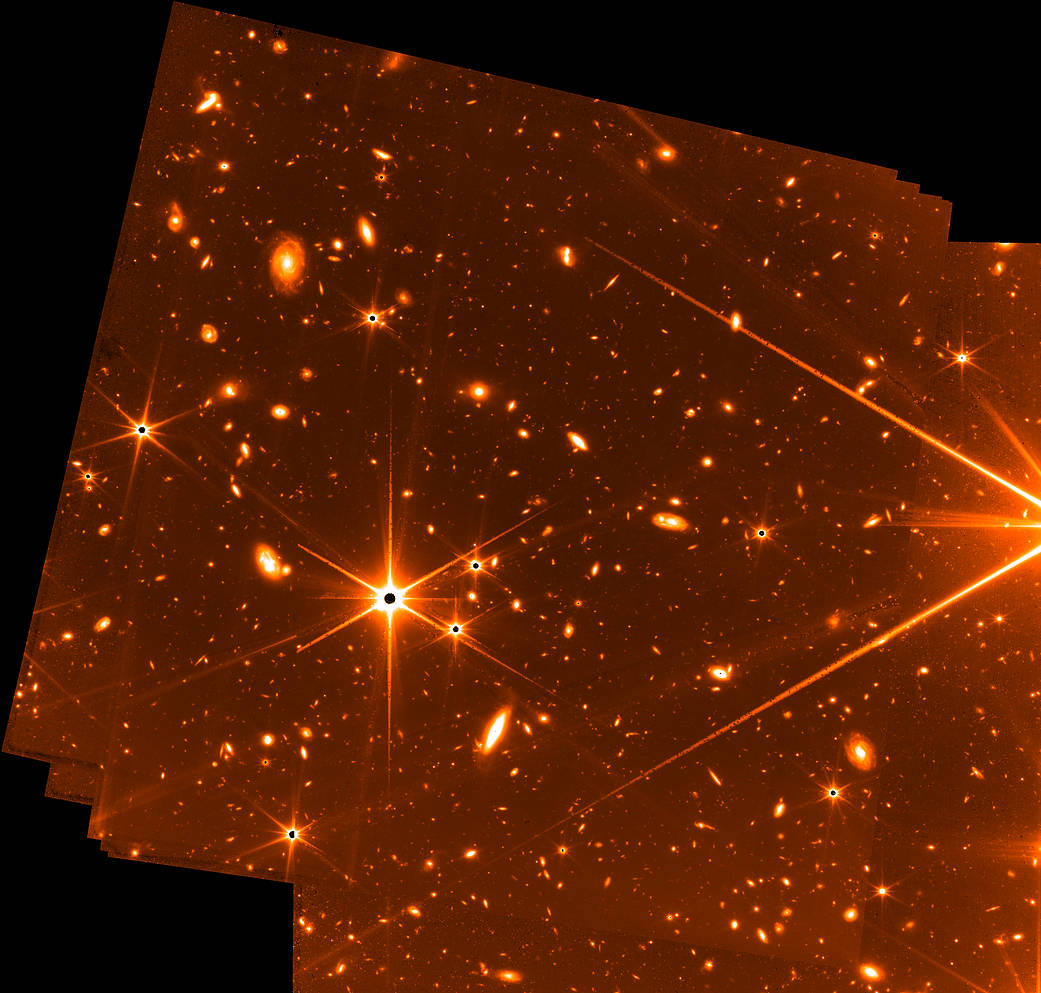We’re less than one week away from the July 12, 2022, release of the first science-quality images from NASA’s James Webb Space Telescope, but how does the observatory find and lock onto its targets? Webb’s Fine Guidance Sensor (FGS), developed by the Canadian Space Agency, was designed with this particular question in mind. Recently it captured a view of stars and galaxies that provides a tantalizing glimpse at what the telescope’s science instruments will reveal in the coming weeks, months, and years.
FGS has always been capable of capturing imagery, but its primary purpose is to enable accurate science measurements and imaging with precision pointing. When it does capture imagery, it is typically not kept: given the limited communications bandwidth between L2 and Earth, Webb only sends data from up to two science instruments at a time. But during the week-long stability test in May, it occurred to the team that they could keep the imagery that was being captured because there was available data transfer bandwidth.
The engineering test image – produced during a thermal stability test in mid-May – has some rough-around-the-edges qualities to it. It was not optimized to be a science observation, rather the data were taken to test how well the telescope could stay locked onto a target, but it does hint at the power of the telescope. It carries a few hallmarks of the views Webb has produced during its postlaunch preparations. Bright stars stand out with their six, long, sharply defined diffraction spikes – an effect due to Webb’s six-sided mirror segments. Beyond the stars – galaxies fill nearly the entire background.
The result – using 72 exposures over 32 hours – is among the deepest images of the universe ever taken, according to Webb scientists. When FGS’ aperture is open, it is not using color filters like the other science instruments – meaning it is impossible to study the age of the galaxies in this image with the rigor needed for scientific analysis. But: Even when capturing unplanned imagery during a test, FGS is capable of producing stunning views of the cosmos.
In this image, the FGS image was acquired in parallel with NIRCam imaging of the star HD147980 over a period of 8 days at the beginning of May. This image represents 32 hours of exposure time at several overlapping pointings of the Guider 2 channel. The observations were not optimized for detection of faint objects, but nevertheless the image captures extremely faint objects and is, for now, the deepest image of the infrared sky. The unfiltered wavelength response of the guider, from 0.6 to 5 micrometers, helps provide this extreme sensitivity. The image is mono-chromatic and is displayed in false color with white-yellow-orange-red representing the progression from brightest to dimmest. The bright star (at 9.3 magnitude) on the right hand edge is 2MASS 16235798+2826079. There are only a handful of stars in this image – distinguished by their diffraction spikes. The rest of the objects are thousands of faint galaxies, some in the nearby universe, but many, many more in the high redshift universe.
Learn MoreJames Webb Space Telescope blog Join the Virtual Global Social for the Reveal of the James Webb Space Telescope’s First Images
Image Credit: NASA, CSA, and FGS team



























